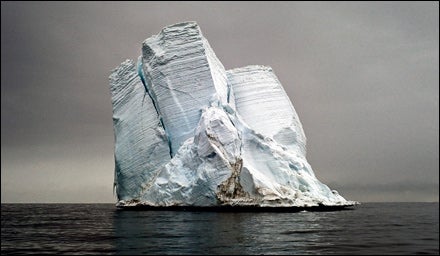If you’re lucky, you’ll get one chance to reach Antarctica. So do it right: Worthy trips last two weeks and cost at least $10,000. Opt for an adventure with multiple stops on land—shooting photos from a cruise ship won’t play. There are plenty of good trips—Mountain Travel Sobek’s 14-day icebreaker cruise to emperor penguin–filled Snow Hill Island comes with digital-photography workshops (from $13,900; ). But this year, consider Geographic Expeditions’ 23-day journey from Ushuaia, Tierra del Fuego, to the Antarctic Peninsula and South Georgia Island, home of Shackleton’s grave ($16,000; ). Based on the luxury icebreaker Cleila II, the trip includes an optional four-day crossing of South Georgia guided by mountaineer (and ���ϳԹ��� correspondent) Dave Hahn; guest lectures by Peter Hillary, son of a guy named Ed; and classes led by wildlife photographer Art Wolfe. Lesson one: Be patient. “Sit still on the ice and penguins will walk right past you,” says Wolfe.
The Best ���ϳԹ��� Photography Trips: Mount Everest Base Camp, Nepal
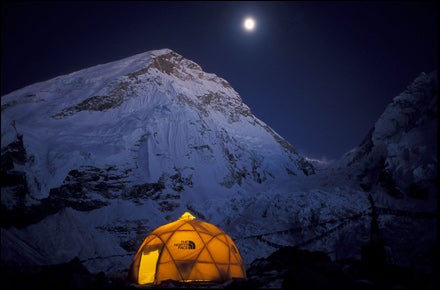
Just try to take a bad picture in the Himalayas. Aim your camera in any direction and you’ll capture sweeping vistas of the world’s highest mountains. Unless you’re Jimmy Chin, you probably won’t be toting your camera to Everest’s summit, so instead trek to Base Camp with mountaineering guide and photographer Wally Berg, who has led trips to and up the mountain for the past 20 years. Berg ���ϳԹ���s International’s 24-day Khumbu treks depart Kathmandu every October and May and use local runners to bring fresh (read: safe) food to the cooks daily ($3,900; ). The spring treks include a night at Base Camp, known for spontaneous Wiffle-ball games and some of the wildest parties above 17,000 feet—good fodder, along with the big hill itself, for panoramics. But do pack a portrait lens. “The best shots near Everest are of the locals,” says Berg. “Sherpa people have the best smiles in the world.”
The Best ���ϳԹ��� Photography Trips: Ouray, Colorado
Lora Slawitschka/Ouray Ice Festival
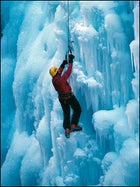 Courtesy of Lora Slawitschka/Ouray Ice Festival
Courtesy of Lora Slawitschka/Ouray Ice FestivalEvery January, the town of Ouray holds a three-day party for those crazed souls who enjoy dangling themselves off outsize pillars of ice (). If you’re an ice climber, hike or rappel into the 164-foot Uncompahgre River Gorge for shots from below (helmet and crampons required). Otherwise, stake a spot on the viewing stands on the eastern ledge of the mile-long gorge—you’ll have a top-to-bottom view of the route across the way. And come early. “Between 9 and 11 A.M., the sun hits the back of the climbers and makes the ice glow,” says local photographer Lora Slawitschka. Bring two lenses—a telephoto, to capture the spray from an ax shattering the ice, and a wide-angle, for panoramic shots of ant-size climbers on the giant walls. Afterwards, crash at the Ouray Chalet Inn (doubles from $100; ), walking distance from both the festival and Ouray’s mineral-fed hot springs.
The Best ���ϳԹ��� Photography Trips: Bosque del Apache National Wildlife Refuge, New Mexico
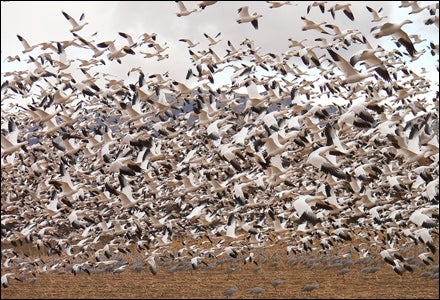
The annual winter bird migrations to the Bosque del Apache National Wildlife Refuge may not be the world’s largest by sheer numbers, but the density is unreal: Some 13,000 sandhill cranes and 40,000 snow geese crowd the sky above small, flooded fields on the Rio Grande from November to February. Equally dense are the crowds of camera-toting visitors. But don’t be intimidated by the hardcores, with their camo-cloaked 600mm lenses. The viewing platforms at the Bosque are often close enough to the flock to use a wide-angle. The refuge opens 30 minutes before sunrise, which is just enough time to set up before the morning fly-out. Chief of visitor services Shawn Gillette also recommends visiting in the spring and summer, when the southern migration—birds flying north for the southern winter—delivers colorful neotropical flycatchers and tanagers. Stay at any of the budget motels in nearby Socorro, some 75 miles south of Albuquerque.
The Best ���ϳԹ��� Photography Trips: Pillar Point Harbor, California
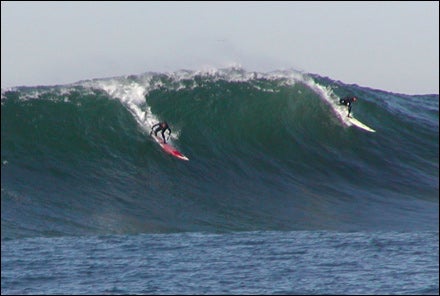
The best reason to shoot Maverick’s isn’t the photos of surfers riding four-story walls of water; it’s being so close to the action that you can actually feel each impact. “Your body aches from the concussion of the wave,” says Seth Migdail, a photographer for Mavericks Surf Ventures, the company that hosts the big-wave competition there each winter. The only way to get that feeling is to reserve a spot on a boat with an experienced captain (try Huck Finn Sportfishing; day trips from $225; ). The sea is rough, so bring Dramamine and extra towels to dry gear. Camera essentials: a 70–210mm zoom—you’ll be within 100 yards of the break—and a UV filter so you can wipe off the spray without scratching your lens. Being on the water gets you close-up wipeout shots that the crowds of photographers on the bluff a quarter-mile north of the break can only dream of. The contest is held with 24 hours’ notice during a huge winter swell, so sign up for the text-message service ($1; ), which alerts you when the event’s going down. Crash at the new Oceano Hotel & Spa (doubles from $200; ), which offers rooms with balcony views of the break and hosts a boozy after-party for the surfers.
The Best ���ϳԹ��� Photography Trips: Great Plains, USA
“Statistically speaking,” says photographer Jim Reed, the author of Storm Chaser: A Photographer’s Journey, “Wichita splits it right down the middle.” “It” is Tornado Alley, an area in Oklahoma, Kansas, and Nebraska where twisters roam between late March and early July. If you don’t have NOAA’s Storm Prediction Center () bookmarked, consider going with an outfit like Storm Chasing ���ϳԹ��� Tours. Its weeklong trips (from $2,600; ) literally go wherever the wind blows. A typical day involves 400 miles of driving in weather-radar-equipped SUVs hunting for trouble in flat, storm-wracked places. With a decent zoom (70–200mm), you should be able to get shots from one to four miles from the center of a storm. Light will be low, so consider putting something colorful in the frame, like a red barn. Don’t become fixated on the funnel; extreme weather creates dramatic light and cloud formations, meaning the best shot might be behind you. And delay happy hour: Surreal storm pictures are often shot during “astronomical twilight,” the 30-minute period approximately one hour after sunset.
The Best ���ϳԹ��� Photography Trips: Yellowstone National Park, Montana/ Wyoming/Idaho
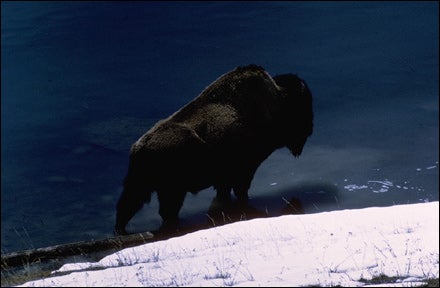
“The classic Yellowstone wildlife image is an animal’s rear end,” says Ken Sinay, owner of the Yellowstone Safari Company. Indeed, most rookies here get so excited by the sight of wolves, elk, bears, and bison that they zoom in for close-up “trophy shots” of animals and go home with images of retreating fur. Give your subjects room in the frame and allow the setting to breathe—fog rising off the Yellowstone River in Hayden Valley, for example, makes a dramatic background for a grizzly shot. And arrive with a strategy. Want to see wolves? Hit touristy Lamar Valley (ground zero for the park’s 1995 wolf-reintroduction program) in winter, when there are fewer visitors and the canines’ dark fur stands out against the snow. Looking for bison? The rut peaks in August. A chance to see both? Take an SUV-supported day trip or a multi-day backcountry trip with Yellowstone Safaris (day trips, $650 for one or two people; two-day trips from $1,525; ). “Use long lenses and try to anticipate the animals’ movements,” says wildlife photographer Tom Mangelsen. “We don’t need another moose-butt shot.”
The Best ���ϳԹ��� Photography Trips: Assateague Island National Seashore, Maryland/Virginia
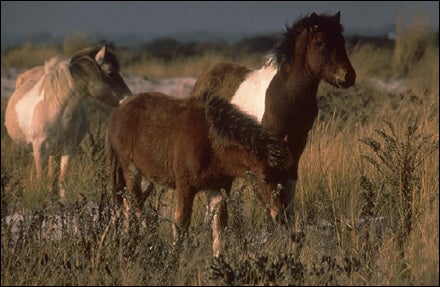
According to local myth, Assateague Island’s wild horses arrived when a Spanish galleon sank offshore and the ponies swam for it. This isn’t true—more likely, colonial farmers grazed horses on the barrier island and a few escaped. No matter. The feral horses have been tromping around Assateague for 300 years, making the 37-mile-long, 1.5-mile-wide island perhaps the most accessible wilderness destination on the eastern seaboard. Most of the two million visitors come in summer to lounge on white sand, so go in spring or fall and pitch a tent at any of the 165 sites (from $20, available May–October; ). Then wander with a wide-angle lens and shoot the 125 horses, which cool themselves on the beach as the sun drops over Sinepuxeng Bay.
The Best ���ϳԹ��� Photography Trips: Great Barrier Reef, Australia
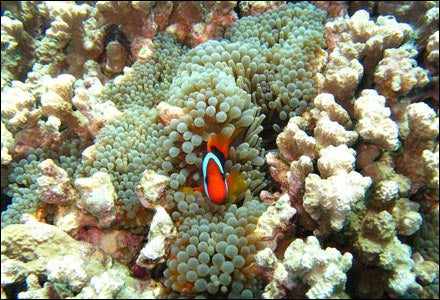
The Great Barrier Reef is the world’s largest coral-reef system—it’s 150 miles longer than the California coast—and the most diverse. Every location here has an upside, from spectacular wrecks in the south to hammerhead and minke whale action farther offshore. But the best variety is found several hours off Cairns, in the northern section. Veteran photographer David Doubilet likes Cod Hole, at Ribbon Reef No. 10, where the potato cod are “the size of Newfoundland dogs.” Nearby is Pixie Pinnacle, full of lionfish, sea anemones, and sea fans. Hit both spots and more on a three-day, three-night trip out of Cairns on the 120-foot liveaboard Spirit of Freedom (US$1,300 per person, including return flight from Lizard Island; ). With its strong tides, the Reef isn’t for newbie divers. But go between September and early November, when the seas are calmer on the northern end of the reef, and it will be easier to frame shots of those massive cod. Gear up with the Sea & Sea DX-2G camera-and-housing system ($1,050; ), plus a strobe.
The Best ���ϳԹ��� Photography Trips: Shoot (Exactly) Like Ansel
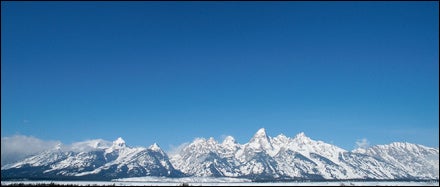
If, like us, you obsess over Ansel Adams's photos of our national parks, you're going to love this. We dug up the backstories of three famous images, then called Don Olson, an Adams expert and astrophysicist at Texas State University, who used topographic maps and astronomical charts to help us identify the GPS coordinates of the locations where Adams composed his photos. —KYLE DICKMAN AND TIM SOHN
Tetons and the Snake River, Grand Teton National Park, 1942
The Spot: Snake River Overlook
Lat/Long: 43°45.250'N, 110°37.410'W
Adams visited the Snake River Overlook, just north of the town of Moose, and took five photos at the northeast end of the parking lot during a June thunderstorm. Trees now obscure the S-curve of river in the foreground.
Clearing Winter Storm, Yosemite National Park, circa 1935
The Spot: Tunnel View
Lat/Long: 37°42.948'N, 119°40.6122'W
This shot looks up the Yosemite Valley from a viewpoint near a wall in the parking lot at the east end of the Wawona tunnel—a popular spot on Highway 41. One winter afternoon, Adams caught the valley just as a storm ended. “I have been at this location countless times over many years,” Adams wrote of the photo, “but only once did I encounter just such a combination of visual elements.”
Mount McKinley and Wonder Lake, Denali National Park, 1947
The Spot: Wonder Lake
Lat/Long: 63°28.563'N, 150°51.639'W
Adams took this sunrise image—looking south across Wonder Lake to Mount McKinley—in July from a hill* situated between the lake's eastern shore and nearby Reflection Pond. Shooting under Alaska's midnight sun demanded a rough schedule: Adams left his camp after the 11:30 P.M. sunset and arrived at about 1:30 A.M., in time to snap a few shots before clouds rolled in.
*To confirm this location, park ranger Jon Paynter followed Olson's GPS coordinates and took 20 photos. Verdict: That's the spot.

